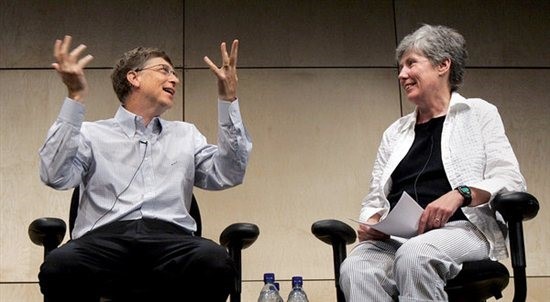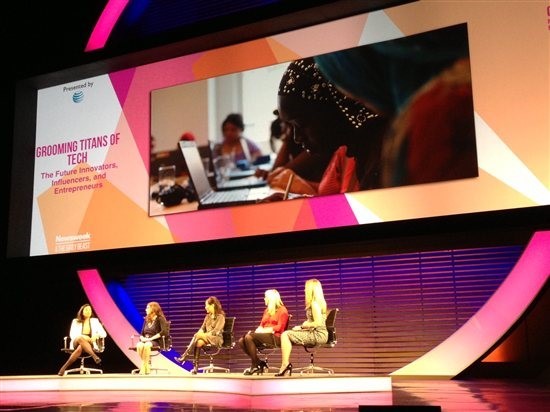Trend to Follow: Women in Computer Science
We are all familiar with success stories of men who code, but where are the women? As of now, female developers are few and far between in technology, and unfortunately it’s getting worse:
- Women make up half of the U.S. workforce, but hold just 25% of the jobs in technical or computing fields.
- In 1984, women represented 37% of all computer science graduates. Today, that number has dropped to only 12%.
Source: Girls Who Code
Despite the scarcity of women in the field, there is enormous opportunity for them to be involved. According to Code.org, there will be more than 1.4 million computer jobs by 2020, but only 400,000 computer science students. Additionally, computer science is the highest earning college degree.
Dr. Maria Klawe, President of Harvey Mudd College says that this void affects the types of products that are created. “If you completely shut out the entire feminine perspective on the world, you’re going to have a different set of products,” said Klawe.
Founder of Dwolla, Ben Milne, recently wrote a blog post asking the same question – How can I work with more women so that we can continue to build a better company? Tech companies are recognizing the need to include female perspectives in order to build better products, and a better company.
Why the gap?
It’s clear that technology is an integral part of the future, and women should to be involved in creating this future. So why are less women studying computer science now than in the mid-1980s? It’s that pesky foe, peer pressure.
Microsoft developer and technical evangelist, Jennifer Marsman, argues that girls need to learn programming at an earlier age, particularly before social pressures come into play. “By the time we first get to them, it’s too late,” says Marsman. “The data shows that girls outperform boys in middle school. Then come the ugly duckling years. That time is when girls want social approval and friends. Just getting girls comfortable with programming before that strikes would be great.”
The stereotype of the nerdy, socially awkward, un-cool programmer certainly isn’t helping either. Stories of successful women in programming are extremely rare. This lack of role models leaves most young girls with the default image that technology is a fraternity with no welcome sign.
This doesn’t need to be the case, says Dr. Klawe. After all, the image of doctors and lawyers has changed over the years to be more inclusive of women, and we can do the same for programming.
As an example, she says “back in the ’70s, we started to show doctors and lawyers, where there are women and men who had lives, who fell in love and out of love and had all kinds of problems. And, all of a sudden, we saw the numbers of women going into medicine and into law skyrocketed, and it’s basically 50-50 now.” (Full article here)
What can we do?
President of Harvey Mudd College, Dr. Klawe, along with Bill Gates
1. Reach Out Early
Computer science hasn’t been viewed necessarily as a “cool major”, though those perceptions are changing. Many believe early education is fundamental to getting girls engaged.
“Reaching out to them, at middle school or earlier would be a positive thing for all kids.” said Microsoft Technical Evangelist Jennifer Marsman. “They learn logic and how to break down a problem into several steps. All of these skills teach you how to think well. So one thing is getting them interested early on.”
2. Make it a Requirement
Harvey Mudd and its president Dr. Klawe, are big drivers behind this change. Last year at Harvey Mudd, almost 40 percent of computer science degrees were awarded to women.
This increase can be credited to the college’s change in curriculum, making computer science a requirement for all students. The introductory course is also split into two different classes — one for students who have zero experience coding, and one for those who have prior experience with code. This distinction eliminated a lot of the intimidation for students, and has led to an increase in computer science majors.
3. Connect Knowledge with the Real World
Getting first-hand experience of programming is also important to eliminating barriers. Even though Marsman took a computer class in high school, at the start of college, she still wasn’t sure if she wanted to choose programming as her career.
She says that her first internship at Ford Motor Company changed her perspective. As a fully functioning member of a team working on a main project, she “saw development as a team sport and got to do some coding. I thought, ‘Yes, I could be happy doing this for the rest of my life.’” After this internship, she switched her major to computer science.
What can you do?
Girls Who Code at the 2013 Women in the World Summit
The absence of female developers in the media fuels the cycle of the lack of female developers. Girls don’t see other girls programming, so they just don’t know that it’s available to them. It’s a matter of awareness, and many organizations are working to bring more visibility to the issue.
One of those is a non-profit called Girls Who Code. Their mission is to empower girls with the skills and resources to pursue opportunities in the computing fields. Girls learn topics like robotics, web design and app development. They also get to see firsthand what it’s like to work in the field with field trips to companies like Google, Twitter and Foursquare.
There are many organizations doing cool things to make women’s voices a part of the next developer generation and there’s lots of ways you can get involved. Here are some of the organizations we’re most excited about: DigiGirlz, Girl Develop It, and Codagogy.
Educate and encourage the girls in your life about how fun and rewarding programming (and science and engineering and math) jobs can be. And who knows, maybe the next member of the developer fraternity will be a Marissa Zuckerberg or Roberta Gates.
What are your thoughts on the movement to include more women in programming? Do you know a girl who loves to code? Leave us a comment with your thoughts.
Photo credit: Tech Cocktail, The New York Times, Girls Who Code


